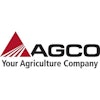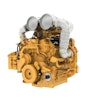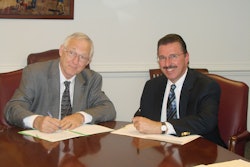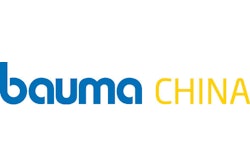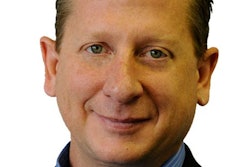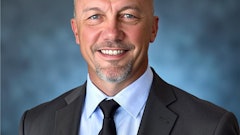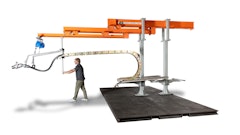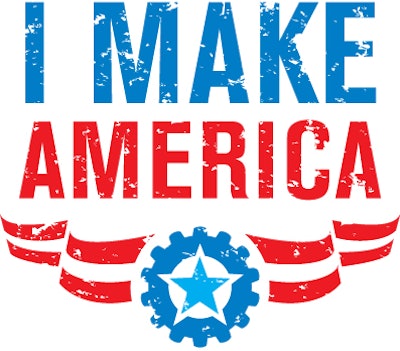
How are off-road industries faring? Domestic vs. global markets? Please speak on behalf of the “I Make America” project, its successes, future goals and how OEMs benefit from being involved?
Our industry sectors are key components to the health of the U.S economy and the strength of the economic recovery. For off-road equipment manufacturing, certainly the construction sector has been hardest hit with the lingering effects of the recession. The agriculture sector has been stronger, helped by commodity prices and positive net farm income of farmers.
In the past few months, the future has become less clear. There’s been little traction in single-family housing. Transportation infrastructure is a key factor for growth, and there’s been no substantial long-term focus on funding. Credit availability has been easing but is still a concern for some customers.
Exports have been a bright spot, but we need action on pending free-trade agreements to boost international business. Global business demand helped many off-road equipment manufacturers stay open through the recession, and they still depend on export sales, especially to emerging markets, for improved business results.
Agricultural equipment makers are helped by commodity demand and prices, but for all off-road equipment manufacturers, the lack of leadership and meaningful legislation coming out of Washington presents a real danger of a stalling economy.
This is where AEM’s I Make America grassroots campaign comes in. We want Congress to focus on manufacturing policies that create jobs, and infrastructure investment and export agreements are proven ways to create and maintain jobs for U.S. workers, for a sustainable recovery.
The issue affects not just our industry and not just OEMs. It affects every community, business, family and individual. An adequate infrastructure system translates into safer and more efficient travel to advance commerce and quality of life. For every $1 billion spent on infrastructure, 30,000 jobs are created, and not just in construction. It has been estimated that overall for every $1 billion in U.S. exports, 5,000 jobs are created.
The I Make America campaign has made a lot of progress so far with more than 175 member companies officially signing up to get their employees and local communities involved; we’ve already had more than 12,000 supporters sign up on the I Make America website.
Congress has passed an extension of the “highway bill” – this is the eighth one - and it is only for six months. President Obama’s latest jobs initiative includes infrastructure spending, but it’s short-term and piecemeal. In our most recent quarterly poll of members, nearly 60% saw no impact from previous stimulus funding.
Roads, highways, bridges and other infrastructure projects aren’t developed and built a few months at a time. A long-term highway bill provides America’s equipment manufacturers with the certainty they need to hire, contractors with the certainty they need to make capital investments in new equipment and employees, and the U.S economy with a badly needed growth engine.
We have pending free trade agreements with Panama, Colombia and South Korea. Failure to enact these FTAs has put America’s manufacturers and farmers at a competitive disadvantage in the global economy. Existing trade barriers make it difficult to compete in countries that want American-made products. While our leaders stall, countries around the world are negotiating dozens of FTAs to boost trade with other non-U.S. countries.
Do your trade shows reflect the strengthening of the various off-road industries?
Obviously a slower recovery for our industry directly impacts the success of exhibitions in this sector. But overall, AEM-run shows have done well despite the economic challenges in the last few years. We collaborate with industry groups to bring co-locations, and industry input in show planning ensures key needs are being met. At CONEXPO-CON/AGG in March our record international participation reflected the importance of overseas buyers.
Overseas, we partner on shows in China – BICES and BAUMA China, and their continued strength underscores the burgeoning marketplace. In Russia with CONEXPO Russia at CTT Expo, the improving economy was reflected in a successful event this past June, with a 46% increase in exhibitors and 30% increase in exhibit space. The growth in India was evident in our inaugural show in India – bC India – in February with an exhibit space increase to 88,000 square meters because of exhibitor demand, and we had more than 22,000 visitors from 69 countries.
AEM recently renewed its alliance with MSHA. What are you hoping to achieve with this closer partnership?
For MSHA, we have long worked with the agency on safety-promotion efforts, and the renewed alliance is a visible commitment to a continued and cordial relationship between the public and private sector. The goal has always been to collaboratively support safety and health as the most important priority for the mining industry. The manufacturer members work through AEM to develop solutions to safety issues that can involve consensus standards, safety materials with a focus on safe machine operation, data-mining to identify the most important issues and most effective solutions, and training sessions. Materials have included various ‘best practices’ documents in English as well as Spanish, safety decals, and joint presentations. Everyone benefits from trained operators and jobsite personnel who know how to properly operate and work around equipment.
There is increasing movement of U.S. manufacturers to foreign markets. Has this changed AEMs goals or information it provides to its members in any way?
AEM provides a forum for industry-wide action on issues affecting manufacturers and the industry. We have industry sector groups that focus on the issues of most importance to them. Our fundamental goals do not change: to provide the services that improve company efficiencies, alleviate unnecessary government intervention, and strengthen machinery markets. We have always had a global focus at AEM, particularly in the development of market statistics and technical standards work, to help our members compete effectively, and the worldwide scope of these has increased. Our U.S.-based trade shows have an international presence and our trade show interests in China, India and Russia are an example of responding to the increasing importance of these markets. In the U.S., as we look at Washington, we have stepped up our public policy advocacy – an example is the I Make America campaign to push for manufacturing policies that encourage growth and job creation. Key public policy issues include increased infrastructure investment, more export-friendly policies, tax policies that spur growth, intellectual property rights protection, and removing unnecessary business visa restrictions.
AEM went to congress to discuss the LightSquared interference with GPS signals and the potential harm to the precision equipment industries. What is the status and next step in this issue?
The FCC says that more testing is needed before LightSquared can proceed. We are still actively working through the Coalition to Save Our GPS to make sure government officials continue to be made aware of the ramifications of this proposal for an extensive nationwide broadband internet infrastructure in the spectrum adjacent to GPS. Some 40,000 ground stations would be used, and they would very likely render commercial and private GPS signals unreliable and in some cases useless. AEM does not object to increasing wireless data capacity, but available test data to date has shown overwhelming GPS interference. A Coalition study notes that overall more than 3.3 million jobs depend on GPS technology and the direct economic cost to U.S. commercial GPS users and manufacturers could be $96 billion.
For our industry sectors, for example, farmer business plans depend on GPS information such as yield data, harvest weights, moisture data, and other precision agriculture data. Interference with GPS signals up to 22 miles away would devastate productivity and impede U.S. agriculture’s ability to help meet the compounding worldwide demand for food.
We are also working on this issue with the Transportation Construction Coalition, and it has outlined the effect of increased use of this technology on construction such as to map and survey construction sites including the location of buried and overhead utilities, facilitate precision grading, enhance material application, help prevent equipment theft and provide real-time monitoring for equipment maintenance.

